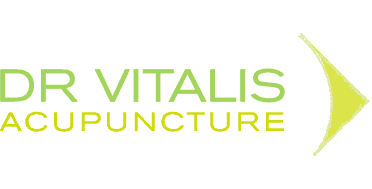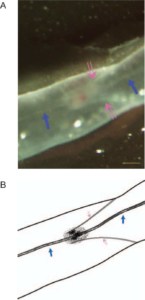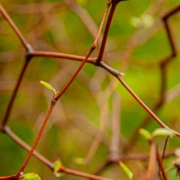Regulation and registration of Acupuncture under New Zealand law (HPCA Act)
The present state of requirements to become an acupuncturist in NZ
Currently, acupuncture is not a registered health profession under HPCAA. Instead, the acupuncture industry is self-regulated. Currently one does not need any formal qualification to practice in NZ. If you have seen acupuncture on TV, you can probably start practising. Except if you are a registered healthcare provider of a profession that is registered under HPCAA. If this is the case, you’re bound by the Health Practitioners Competence Assurance Act. And your actions may be in breach of the patients’ rights. Here is an example of an osteopath who got in trouble for practising acupuncture without being qualified.
There are a few organisations offering voluntary membership for acupuncturists including Acupuncture NZ (formerly New Zealand Register of Acupuncture Incorporated) and New Zealand Acupuncture Standards Authority Incorporated. Membership in either of these organisations is voluntary and allows its members to become ACC acupuncture providers. Currently, neither of the organisations has an authority to register an acupuncture practitioner as a health care provider under the HPCA Act, even though their names may imply the opposite.
Your local council may have some regulation regarding practising acupuncture, but they will not normally check your qualification. For instance, if you want to practice Acupuncture in Auckland, City council does have some requirements on how to set up your practice.
* I’m not a lawyer. Laws and rules can change. Please seek legal advice before practising acupuncture in NZ.
What will happen when acupuncture is registered?
Once acupuncturists are regulated and required to be registered, the required standard for acupuncturists in New Zealand should significantly improve.
My patients tell me, that in New Zealand, there is a multitude of acupuncturists who are less than fluent in English. My view is unless there is adequate interpreter provided, these practitioners violate the patients’ Right to Effective Communication. It may become illegal for these acupuncturists to practice acupuncture under the new law.
The new registration and regulation of acupuncture under the HPCA Act to ensure that:
- acupuncturists have the right qualifications to provide their services
- maintain and develop acupuncture skills and competence
- acupuncturist are physically and mentally able to work
When will acupuncture be regulated?
Unfortunately, we don’t know how long it will take for acupuncture to get a status of registered health profession under HPCAA. Currently, registration looks close. Hopefully within a year or two the profession will be under HPCAA.
Update Aug 2022
The members of the new Chinese Medicine Council of New Zealand (the Council) met in Wellington for the first time on 11 July 2022. They are now ready to start the work that is needed to take our profession through to registration under the Health Practitioners Competence Assurance Act 2003 (the Act).
A little background
In the years and months leading up to the appointment of the Council, representatives from the profession met many times as a Working Group to discuss the best way forward and what could be done to assist the Council once it was appointed. The Ministry of Health advised us that there were three main criteria that the profession had to demonstrate before we would be able to be registered.
That there was a risk to the public by the profession remaining unregistered.
That the profession was united in its wish to gain registration.
That the profession had the available finances to fund the initial setup of the Council until registration fees could start to be collected.
It was discussed at several meetings and all groups agreed that this was achievable.
Finance
Acupuncture NZ and NZASA agreed that they would fund the new Council proportionate to the number of registrants in each organisation. It was agreed that Acupuncture NZ would provide 55% of the finance and NZASA the remaining 45%. How each organisation raised that money was their own responsibility. Under the Act, there is no provision for the Council to directly invoice practitioners to cover the initial setup costs; we are only able to invoice for application and registration fees once we are operational. Initially the Council requested the same funding from each of Acupuncture NZ and NZASA, but beyond these first installments the total payments are proportionate to membership, as previously agreed.
The exact costs of operating the Council for its first year are unknown. It can reasonably be expected, however, that it will be in the vicinity of $600-800,000.
Initially the Council will be appointing a Project Manager on a 4-6 month contract to help guide us through the initial processes of setting up our office in Wellington, organising tax and banking requirements, deciding on the IT system and setting up the database. The Project Manager will be employed for 2-3 days per week. We may also appoint a Chinese Medicine Consultant to work with the Project Manager on specific contracted tasks.
The Council will be advertising for a Registrar in the coming months and this will be notified nationally. The Council has appointed a Recruitment Committee (consisting of four Council members) to manage the recruitment of the office personnel. Until such time as the Council is able to start receiving registration fees, the Project Manager, Chinese Medicine consultant, Registrar and any other secretariat personnel will be paid for their services from the money received from the profession.
We will also have a Service Level Agreement with the Nursing Council of New Zealand. These corporate services relate to the provision of office space, building facilities, reception, and financial services. The details of this agreement have not yet been finalized but it could be expected that it will cost the Council around $50,000 per annum – similar to that which other Responsible Authorities (RAs) pay.
Our physical office is being set up in the Nursing Council’s premises in Wellington. The setup is likely to cost around $40,000. This includes preparation of the physical space as well as the purchase of desks, computer terminals and other necessary equipment.
A dedicated website, logo and branding will be developed in the coming weeks. We expect that this will cost a minimum of $20-25,000.
The most expensive element will be the IT system. The IT system iMIS is already in use by the Nursing Council and several other RAs. By joining into this already established system we would be minimizing setup costs. The Council will have a completely separate firewalled system within iMIS and information will not get shared across RAs. The Project Manager will also investigate other IT systems and the Council will decide which is the most appropriate for our needs. At this stage the final IT costing is not known.
Scopes of Practice and Pathways for Registration
Over the coming weeks the Council will be developing documentation outlining scopes of practice and pathways for registration. Competencies for scopes of practice and accreditation standards for education providers will also be developed. We also need to investigate the most appropriate way to set English language requirements. Consultation with the wider profession will be an integral part of developing this documentation.
At this early stage we are not able to provide practitioners with an exact timeline of when each step will be completed. We will, however, ensure that there is regular communication with the profession so that there can be clarity around our progress. We have an enormous amount of work to do in the coming weeks and months and we encourage everyone to keep up with what is happening and to have your say when it comes time for us to consult on the various documentation, scopes and pathways.
Regulation Update (10 June 2010):
From NZ Register of Acupuncture newsletter: ”
…we have been asked to reapply for regulation under the Health Practitioners Competence Assurance Act. Although Acupuncture was approved in 2007, the subsequent review and the recommendations which came out of the review have meant that we need to resubmit our application to show that we meet the new criteria… “
Unfortunately, acupuncture regulation is delayed again!
Registration update (4 November 2011)
From NZ Acupuncture Standards Authority newsletter: *no decision about regulation will be made this year*, and further information has been called for regarding blended authorities. The Minister has clearly stated that no new Boards/Councils will be established, and therefore Chinese Medicine must be blended into an existing HPCA registration Board or Council.
This means that a current HPCA Board/Council will have to agree to host Chinese Medicine. This agreement will form part of the advice given to the Minister of Health.
Once the Ministry has completed its processes, the final decision regarding regulation is in the hands of the Minister of Health, regardless of the advice and recommendation from the Ministry of Health team.
Update (9th of May 2017):
Chinese Medicine professional bodies in NZ, including NZASA and AcNZ, have been meeting with Health Workforce New Zealand (HWNZ) to discuss regulation of Chinese Medicine under the HPCA Act 2003.
These contacts culminated in a meeting on 14th March 2017 with Professor Des Gorman (Chair) and Janis Freegard (Principal Advisor) from Health Workforce New Zealand. The outcome of this meeting was a clear pathway for the profession, outlining the next steps to be covered in this journey. The Minister of Health has agreed in principle that CM should be regulated and that a Chinese Medicine Council of New Zealand (CMCNZ) should be established under the host Responsible Authority of the Medical Council of NZ (MCNZ).
Subsequently, the profession submitted a comprehensive cost analysis to show the Minister of Health that the profession is able to afford this undertaking. This document is a conceptual estimate of the cost to convene a Council and an indication of the costing of the first year of operation. The costing showed that regulation will not be an expensive exercise and that it is well within the means of the profession. These setup costs will be shared as a one off set up levy per practitioner of approximately $110-$120, separate to APC costs. This levy is based on a total profession number of around 970- 1000 CM practitioners. These estimates are subject to change; however, they do provide useful guidelines about set up costs to be paid by each member of the profession.
The CM representatives group has also provided a proposed list of protected titles to HWNZ. These titles – once approved – will ONLY be able to legally used by practitioners registered under the proposed regulatory CM Council.
The parliamentary process to be followed is stringent and will largely be handled by HWNZ. HWNZ will now prepare a formal recommendation for the Minister that CM be included under the HPCA Act. HWNZ will consult with different ministries such as Treasury and Ministry of Business Innovation and Employment to ensure all is in order before the recommendation is presented to Cabinet. Provided Cabinet agrees, an Order in Council will be written up, signed off by the Governor General and tabled in parliament.
The Minister will then call for nominations to the CM Council. Five practitioners and two lay persons will be appointed by the Minister. A Registrar (or Registrars) will be appointed and the new CM Council will then start the process of establishing standards, competencies, code of ethics, APC fees, scopes of practice etc.
This process is likely to take up to twelve months to complete. If all goes well the new CM Council should be able to be accepting registrations for the following financial year.
Acupuncture Regulation update 21 February 2018:
Professor Des Gorman (Executive Chair, HWNZ) sent a letter to Chinese Medicine representatives with an update:
I recently had a positive meeting with the new Minister of Health Hon David Clark.
He has confirmed that the process of regulating Chinese medicine under the HPCA Act 2003 will continue. This is good news for the profession.
Health Workforce New Zealand is continuing with the legislative and organisational requirements for regulation. This consultative process takes time and formal government agreement will still be required before arrangements can be finalised.
See the letter here: 21 February 2018 Chinese Medicine Profession
March 2021 update – delays due to COVID
The application to regulate acupuncture/Chinese medicine was put on hold by the Ministry of Health due to the New Zealand General election and the ongoing focus of the government responding to the COVID-19 pandemic.
On 8th March 2021, representatives from the profession-wide Chinese medicine Working Group had a meeting with the Principal Advisor (Regulation of health professions), Health
Workforce at the Ministry of Health, Steve Osbourne to discuss the next steps for the application.
We were informed that the Cabinet paper and the Regulatory Impact Statement (the application documents) for Chinese medicine regulation remain on the desk of the current Minister of Health, the Hon Andrew Little. However, the application is not viewed as a high priority item for the Minister of Health currently and there is no indication at this point as to when he will be reviewing the documents.
The next step will be for the approval of the Minister. Subsequently, these papers to be lodged with the Cabinet Social and Wellbeing Committee.
Steve Osbourne assured the Working Group that Health Workforce remains supportive and
committed to the Chinese medicine application for regulation and that a clear case has been made for the need for regulation of Chinese medicine under the HPCA Act. He advised that he will keep in regular contact with the Minister of Health’s office to review what progress is being made with the application and will update the Working Group accordingly.



 What you see on the photo on the left is acupuncture meridian. Korean scientists discovered a way to make pictures of acupuncture meridians to help visualise them.
What you see on the photo on the left is acupuncture meridian. Korean scientists discovered a way to make pictures of acupuncture meridians to help visualise them.